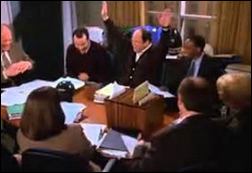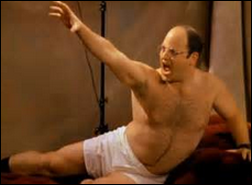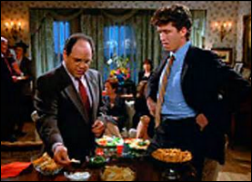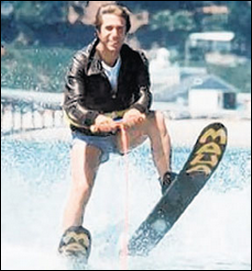I hear you, and I agree—HIMSS is definitely facing some big challenges right now. The leadership and governance issues you…
Startup CEOs and Investors: Bruce Brandes
All I Needed to Know to Disrupt Healthcare I Learned from “Seinfeld”: Part VII – Showmanship, Double Dipping, and the Timeless Art of Seduction
By Bruce Brandes

Are there any classes in business school where we are taught to learn to take yes for an answer? Evidently not, because so few do.
Over the years, we have all been in meetings or presentations that went exceedingly well. In fact, often, the objectives are achieved long before the time allotted for the discussion has expired.
I was in a meeting just last week when an entrepreneur seeking funding got to a “yes” from our team 45 minutes into an event scheduled for an hour and a half. To his credit, he asked if we had any other questions or topics for discussion. When it was clear we were content, he confirmed next steps, thanked us, and got up to walk out. He exited on a high note for sure! And with my newly-found free half hour, I got inspired and started to write this column.
Not surprisingly, the first thought entering my mind as I sat down at the keyboard was of George Costanza developing a plan to end every conversation on a "high note" and "leave them wanting more."

George: "I had ’em Jerry. They loved me."
Jerry: "And then?"
George: "I lost ’em. I can usually come up with one good comment during a meeting, but by the end it’s buried under a pile of gaffes and bad puns.”
Jerry: "Showmanship, George. When you hit that high note, say goodnight and walk off."
Unfortunately, in business, showmanship has a different meaning than it does in comedy. Many companies can put on a great show to distract from disappointing or alarming realities. HBOC’s yada yada we discussed earlier comes top of mind.
How would our world, and healthcare specifically, be different if we applied Jerry’s version of showmanship to our healthcare business? Think of your favorite legacy vendor, say one who has built and sold a medical device or an EMR for decades, whose business is clearly waning as they desperately cling to their diminishing ongoing maintenance revenues.
Imagine the implications of them one day frankly telling the market long before they ever reached that point of decline, “Thank you, everybody. That’s it for me! Goodnight, everyone.”
In some ways, this does happen, just not as obviously and directly. Is this what Siemens was essentially saying when Cerner bought them last year? Or is that actually what SMS tried to express back in 2001 when they sold the company to Siemens in the first place?
In the late 1960s, SMS took their first dip into the market by pioneering shared computing for hospitals and helping revolutionize the business of healthcare. Decades later, SMS would try to “double-dip” their way to restored relevance with the introduction of Soarian. What would the market have missed if SMS had instead taken a page from Jerry’s playbook and stepped off the market stage in 2001 (or earlier)? Would their clients have been better off moving then to another vendor, unencumbered by the pressure to protect legacy maintenance fees, with more clear promise for the future?
You may be thinking that many of these established companies (Philips, IBM, Stryker, etc.) reinvent themselves regularly by acquiring innovative, growing companies with better solutions. Some large companies do indeed make successful integration of acquisitions a core competency.
However, more often than not, legacy culture extinguishes the spark which made that group they acquired successful in the first place. Established vendors with historical encumbrances find it very difficult to bring innovations to market that may disrupt those legacy revenue streams. So generally they wait until some other entrepreneur with a more agile organization does it for them.
For example, who was better positioned 20 years ago to understand people’s preferences for taking, viewing, and sharing photos than Kodak or Polaroid? Many of you know the story about Kodak inventing the digital camera but shelving it out of fear it would cut into their revenue from selling film. Who would have bet instead on an arrogant, hoodie-wearing, college dropout to put these companies out of their misery?
When was the last time you shunned Facebook or Instagram in favor of taking your film to the Kodak Photomat so you could share photos like this one?

Of the companies on the Fortune 500 from 1995, 57 percent are no longer on the list. Eighty-seven percent of the Fortune 500 from 1955 are now completely out of business.
Which healthcare vendors are poised to become the next Kodak? And might the industry be better served for some of those organizations to accept their inevitable fate, sparing the industry a ride on their death spiral?
Preferably, the industry would benefit if these legacy EMR and device companies would realize their proper place in the new, boundary-less healthcare ecosystem. Replacing incumbent vendors unnecessarily will only take time and money which healthcare organizations do not have.
To truly add value to the marketplace, legacy vendors must commit to interoperability completely and unreservedly as if their lives depended on it. Historical interoperability initiatives driven by the government or the vendors themselves have left us with little more than brochure-level integration.
Healthcare executives are now taking control of their own destiny. Through the new Center for Medical Interoperability, the CEOs of the most influential health systems in the country are turning the tables on vendors to open up and play nice with others or seal their fate to follow in Kodak’s footsteps.
I implore those legacy companies who may resist, perhaps greedily trying to hang on, to take metaphorical advice from Timmy, who once rebuked George for trying to double-dip his chip. "From now on, when you take a chip, just take one dip and end it!”

Personal note: I have often wondered how one day I could apply my endless hours of Seinfeld study to somehow support my career. Having fallen short of my dream job as a sitcom writer, the chance to periodically pen this column has been great fun for me. I sincerely appreciate the kind words and encouragement I have received from old friends and new colleagues through the HIStalk community.
I plan to take my TV friend Jerry’s advice and end this series — hopefully on a high note — with this post, possibly leaving a few of you wishing for more rather than becoming stale and redundant. As a child of the 70s, I vividly recall how the phrase “jumping the shark” was coined. So, good night everybody. That’s it for me!

Bruce Brandes is managing director at Martin Ventures, serves on the board of advisors at AirStrip and Valence Health, and is entrepreneur in residence at the University of Florida’s Warrington College of Business.


This is great. I’ve just lived through this with the company I helped start 14 years ago and from which I recently parted ways. The brochure features have to become real and beneficial for providers and patients. Exciting times ahead.